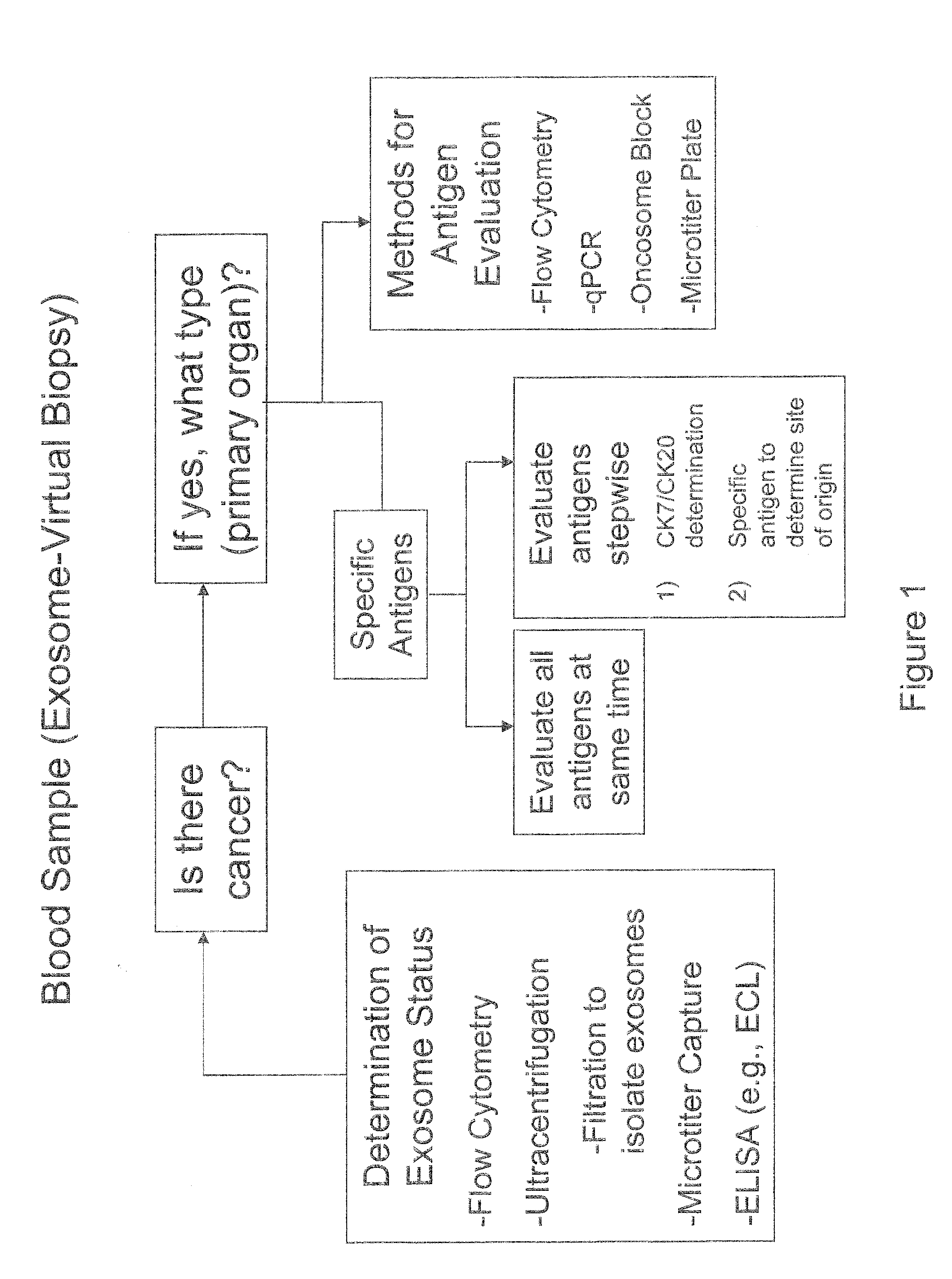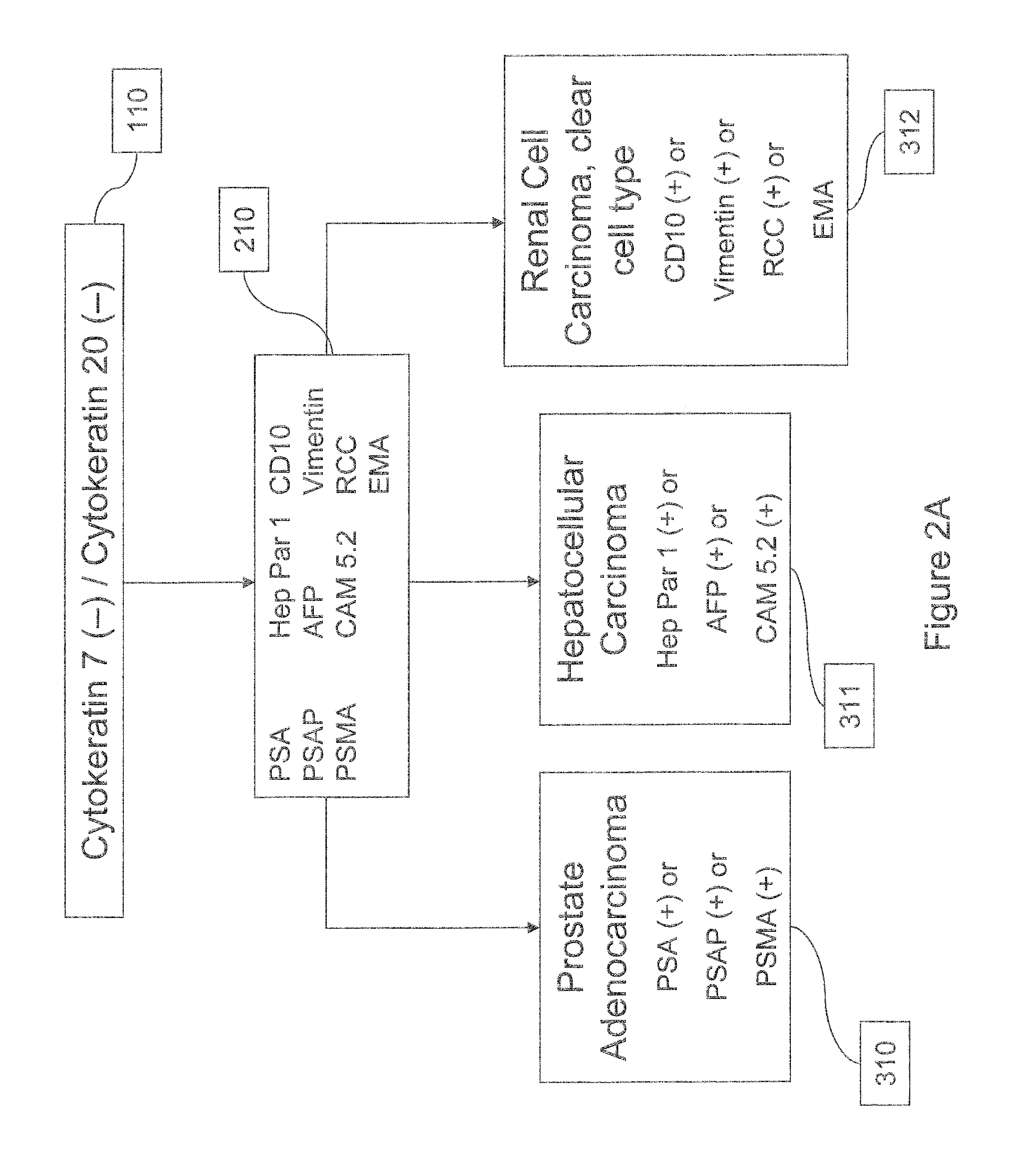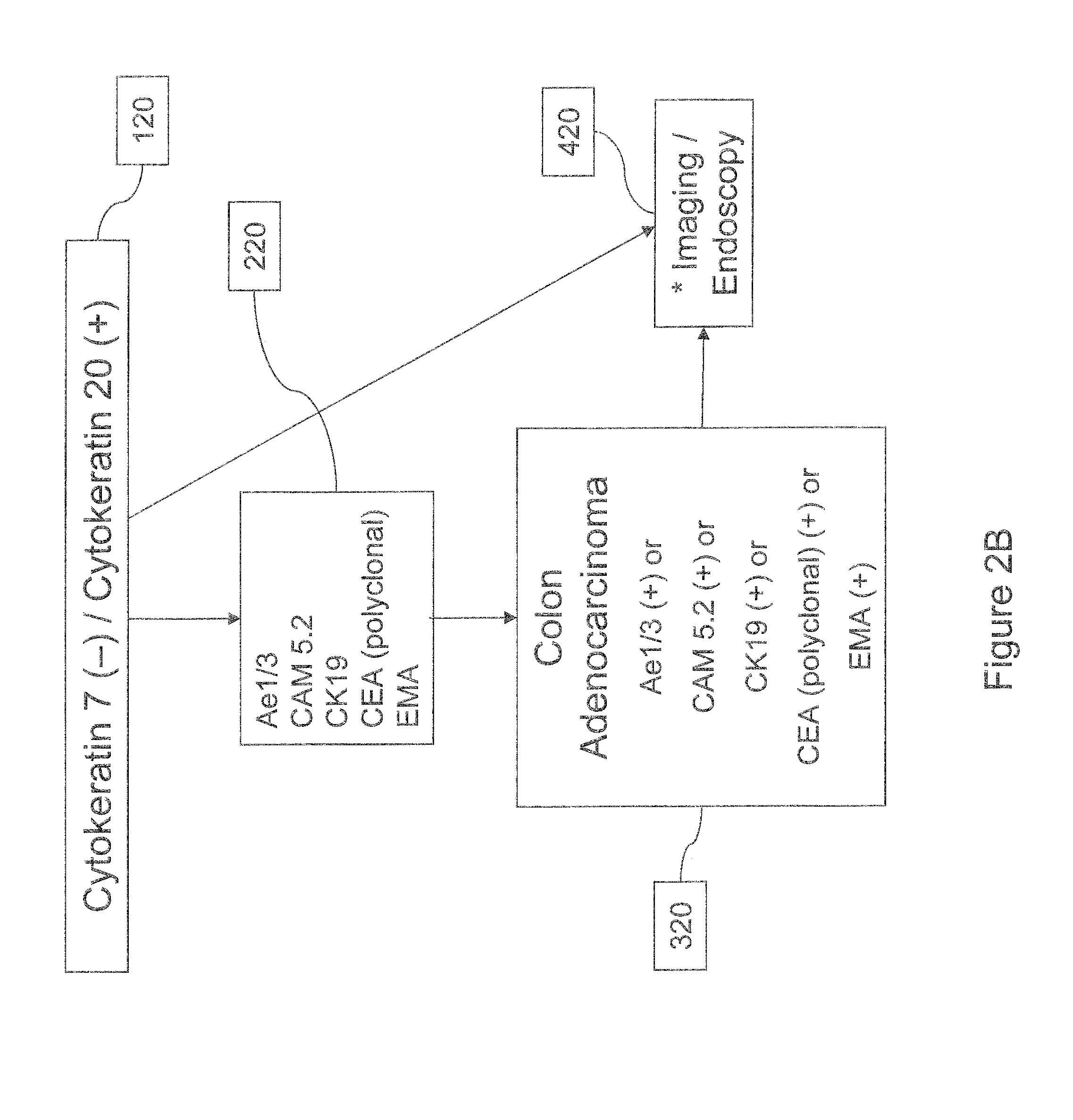Cancer detection markers
a detection marker and cancer technology, applied in the field of molecular classification of diseases, can solve the problems of poor prognosis, vexing aspects of cancer, and major health challenges, and achieve the effects of low cost, easy to use, and easy to us
- Summary
- Abstract
- Description
- Claims
- Application Information
AI Technical Summary
Benefits of technology
Problems solved by technology
Method used
Image
Examples
example 1
Detection / Quantitation / Characterization of Exosomes by Flow Cytometry
[0073]Exosomes may also be measured by flow cytometry. Flow cytometry is generally used to measure cell-surface antigen expression and thus may be readily adapted to measuring antigens on the surface of exosomes. In general, exosomes are isolated from a sample (e.g., serum) and then incubated with a labeled antibody (e.g., fluorescence-labeled) against some surface marker expected to be found on the exosomes (e.g., EpCAM). This solution is then passed through a cell sorter, which detects and “counts” the number of labeled exosomes as they flow through an optical / electronic detection apparatus. Multiple labeled antibodies may be used in the same sample as cell sorters are capable of detecting multiple wavelengths of light at once. Flow cytometry may also be used to detect and quantitate cytoplasmic antigens. For this it is generally necessary to fix and permeabilize cells to enable antibodies to gain access to them,...
example 2
Detection / Quantitation / Characterization of Exosomes by ELISA
[0094]ELISA (Enzyme-Linked immunosorbent assay) can be adapted to detect, quantify, and characterize exosomes according to the invention. The purpose of an ELISA is to determine if a particular protein is present in a sample and optionally, how much. EpCAM-bearing exosomes were detected and quantitated in the supernatant of epithelial cancer cell lines in the following experiment.
[0095]Reagents:[0096]1. Capture antibody is a mouse monoclonal (clone 158210, R&D systems catalog #MAB 960) raised against the extracellular domain of Human EpCAM.[0097]2. Detection antibody is a goat polyclonal (R&D systems catalog #BAF960) raised against recombinant extracellular domain of Human EpCAM.[0098]3. Quantification achieved by comparison with a standard curve generated using recombinant extracellular domain of Human EpCAM (recombinant EpCAM / Fc chimera, R&D catalog #960-EP-050).
[0099]Sample Preparation:[0100]1. Exosomes were isolated by ...
example 3
Detection / Quantitation / Characterization of Exosomes by IHC
[0110]Exosome IHC will generally be carried out on an exosome block. Exosome blocks are prepared by isolating exosomes from a patient sample (e.g., plasma sample), fixing the exosome pellet (e.g., with formalin), and then embedding the fixed pellet in some medium (e.g., paraffin) that allows for convenient long-term storage. Qualitative and quantitative IHC analysis may then be performed on thin slices of the exosome blocks using antibodies against proteins of interest on the exterior or interior of the exosomes.
PUM
| Property | Measurement | Unit |
|---|---|---|
| sizes | aaaaa | aaaaa |
| sizes | aaaaa | aaaaa |
| sizes | aaaaa | aaaaa |
Abstract
Description
Claims
Application Information
 Login to View More
Login to View More - R&D
- Intellectual Property
- Life Sciences
- Materials
- Tech Scout
- Unparalleled Data Quality
- Higher Quality Content
- 60% Fewer Hallucinations
Browse by: Latest US Patents, China's latest patents, Technical Efficacy Thesaurus, Application Domain, Technology Topic, Popular Technical Reports.
© 2025 PatSnap. All rights reserved.Legal|Privacy policy|Modern Slavery Act Transparency Statement|Sitemap|About US| Contact US: help@patsnap.com



